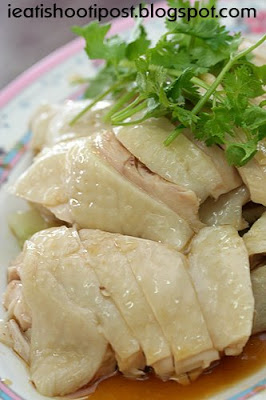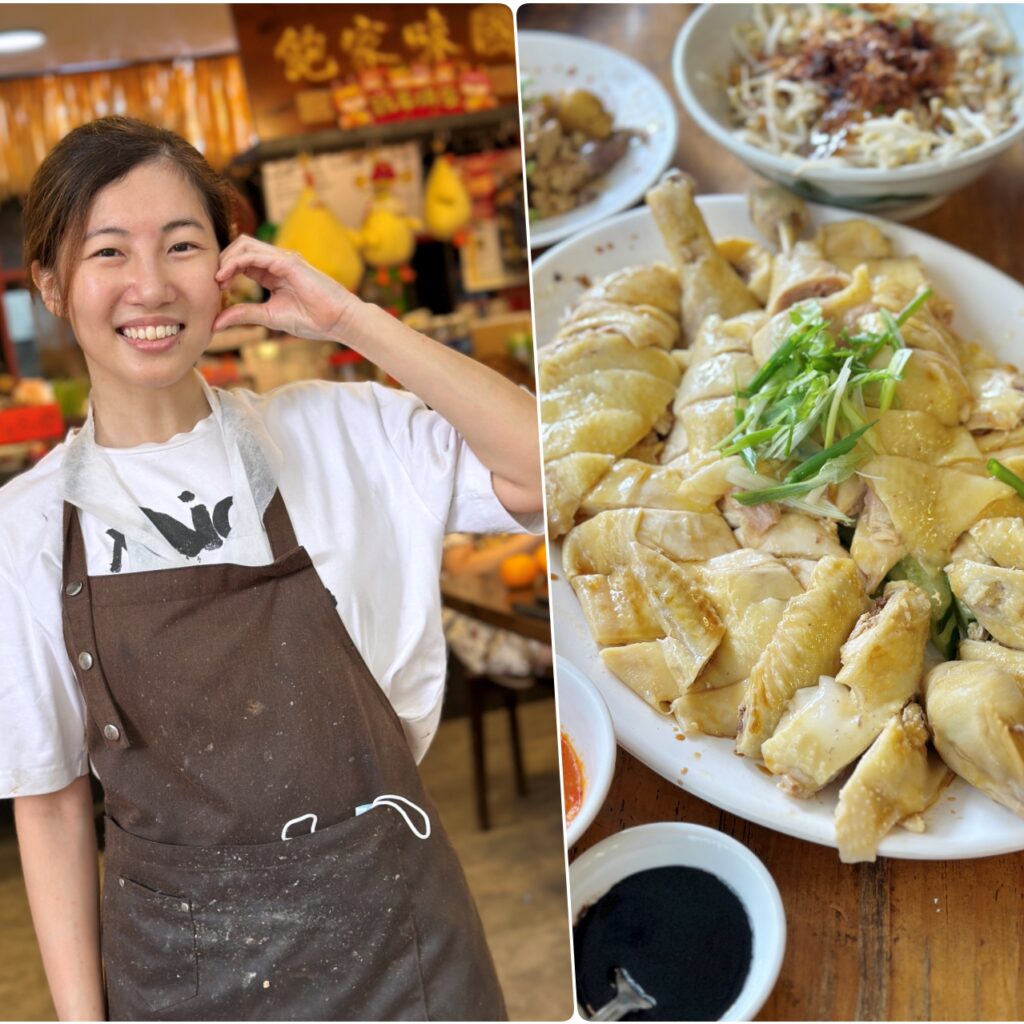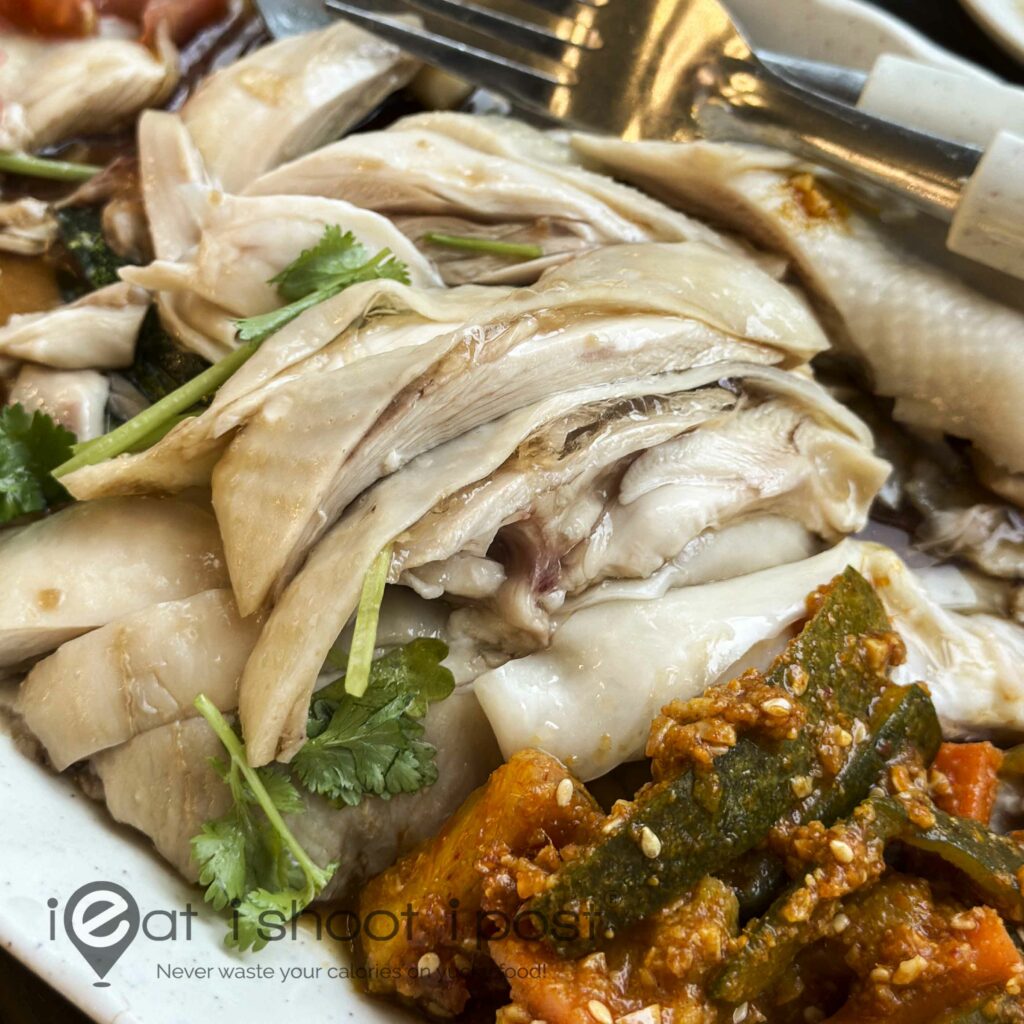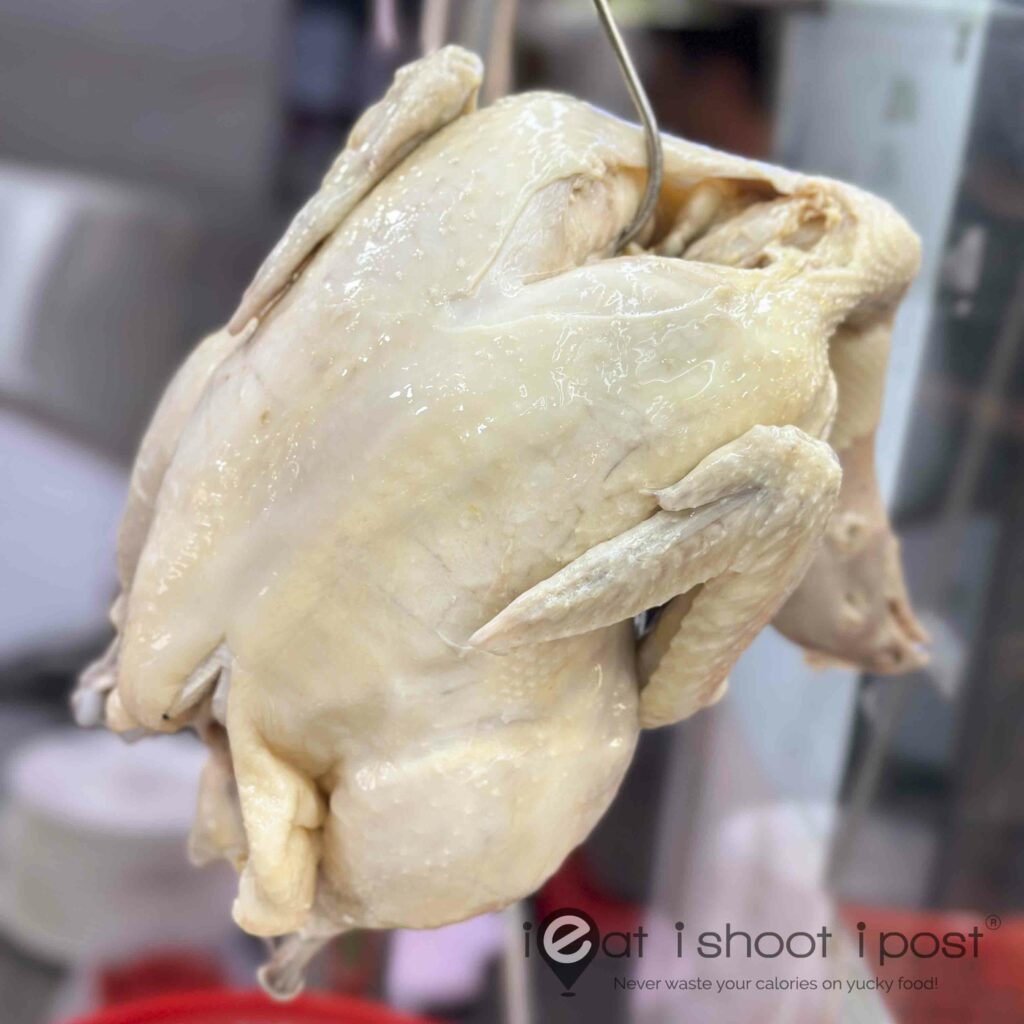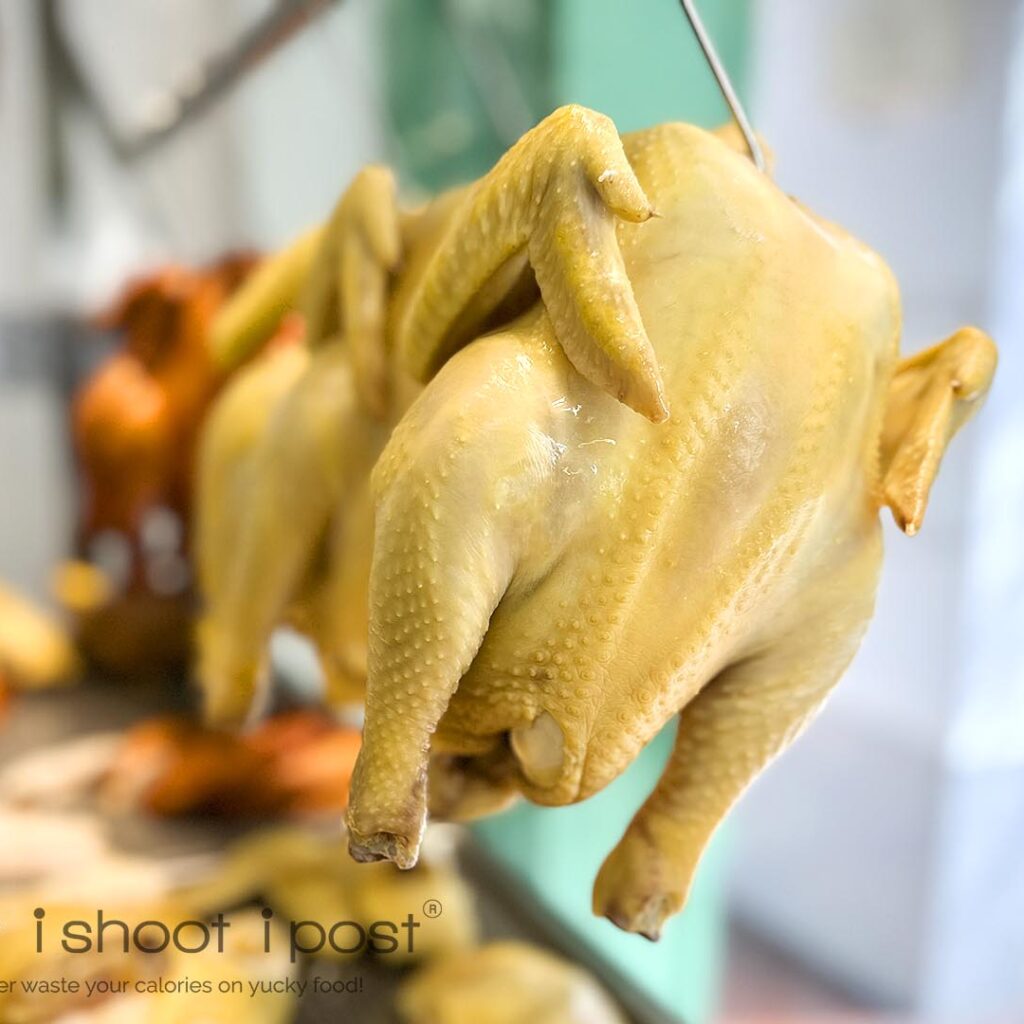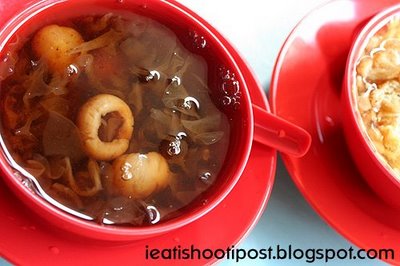I used to believe that in order to prepare a good chicken rice, the rice had to be fried with garlic first to coat the grains with a thin layer of flavoured oil before cooking in chicken broth. That was how my Hainanese mother-in-law taught my wife to cook it.
When I ate the rice at Yeo Nam Kee, I started to wonder what the process of frying the rice first actually does to it. I guess the only way to find out is to conduct a simple experiment at home. But until I do that, I seeked the opinions of a few experts I knew. One was the owner of a famous chicken rice chain and the other is a self professed “all the chicken rice in Singapore cannot beat my mother’s” chicken rice expert. Their answers caused a paradigm shift.
It seems that the frying process was not as important as the broth and the chicken oil used in the cooking, and in fact both the experts don’t even think it is necessary to do it. Well, this just raises a lot more questions. I wonder if the frying process does something to the texture? And to ask a more fundamental question: How should chicken rice be judged? Of course, taste is one factor. But how about the texture? Should the grains be whole and chewy or broken and soft? Should it look perfect and display an homogeneity of colour like the one here or should it look a little uneven in colour and broken like Thien Kee’s?
The rice here is the picture perfect — almost a bit too perfect. Each grain is whole and coated with a thin layer of oil and the texture is just right. However, I just can’t help but feel that it was too “clean”. When you add chicken broth to the rice while cooking, you would invariably get those little “protein and blood precipitates” so that your rice would have little specks in them. At least that is how chicken rice at home usually turns out. So I am not sure what to think when the rice turns out so clean.
Tastewise, it was alright but certainly not exceptional. It was the kind of chicken rice that I could get from a lot of chicken rice stalls nowadays. Carnineviand, the foodie who recommended this stall had already warned me that the standard of the rice here varies. According to him, it is unbeatable on good days, but pretty ordinary on others. I guess I must have come on one of those “ordinary” days. 3.75/5
On the other hand, the chicken here is quite shiok. It’s the plump and juicy, city dwelling (as opposed to kampung), voluptuous and sexy type of chicken that I prefer. And the chicken has managed to retain a lot of its “chickeny” flavour since the stall owner here makes it a point not to soak the chicken in ice water for too long and thus wash away all the natural oils and juices. You can just about make out the nice bits of jelly on the surface of the chicken. 4.25/5
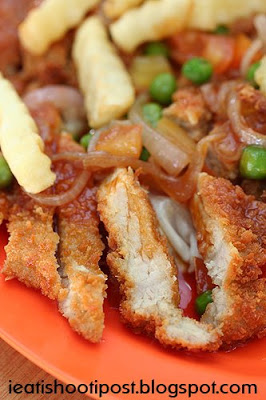
Hainanese Pork Chops (Small) $10
 Being a traditional Hainanese joint, I just had to try the Hainanese Pork Chops here and I am glad to say that I was not disappointed. They were seasoned well and the there’s that light tingly crispiness about it that hints of the fact that they still use crushed cream crackers to coat the pork loin before frying. The only thing lacking is the canned peas which have been replaced with frozen ones. Otherwise, it was pretty enjoyable 4.25/5
Being a traditional Hainanese joint, I just had to try the Hainanese Pork Chops here and I am glad to say that I was not disappointed. They were seasoned well and the there’s that light tingly crispiness about it that hints of the fact that they still use crushed cream crackers to coat the pork loin before frying. The only thing lacking is the canned peas which have been replaced with frozen ones. Otherwise, it was pretty enjoyable 4.25/5
Conclusion
Now I am really determined to get to the bottom of this chicken rice conundrum. What constitutes traditional chicken rice? What do chicken rice afficianados look for in a good chicken rice? Is frying the rice before cooking a critical step? And most important of all, where can I find that gold standard plate of chicken rice in Singapore?




